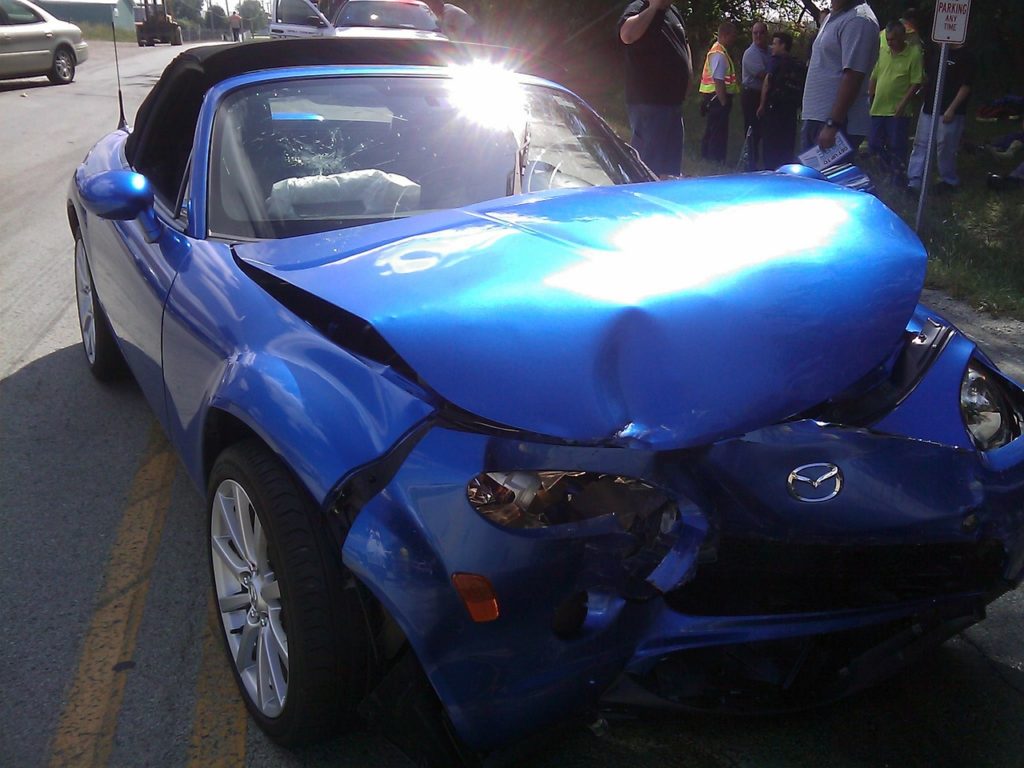In Part One of this post, we looked at:
- why, in general, mixing your tyres across an axle is bad news
- why you should avoid mixing tyres with different amounts of wear
In this part, we’ll look at three additional types of mixing tyres, and why they are also a terrible idea.
1. Mixing tyre sizes
If you need to replace a tyre in a hurry, and the supplier doesn’t have an exact size match, it might be tempting to fit a ‘near miss’. But there are several really good reasons to avoid this.
The most serious are to do with handling. As we discussed in Part One, if you want your car to handle predictably, you want the forces to match on both sides of an axle. That’s not going to happen if the tyres are different sizes. For example, if one tyre is even slightly wider than the other, it will offer different amounts of grip. As we’ve seen, this can result in problems with instability, braking and cornering. This is especially true in wet conditions, just when you most want the car to do what you expect.
However, the problems don’t stop there. Your speedometer isn’t designed to cope with two tyres of different radiuses, and may no longer be accurate. No wonder mismatched tyres are an MOT fail!
In addition, leaving mismatched tyre sizes on your car for any length of time can lead to damage to other parts, including the clutch and wheel bearings.
2. Mixing cross-ply and radial
If you’re old enough to remember Public Information Films in the 1970s, you’ll know all about the dangers of mixing cross-ply and radial tyres (incidentally, we’re not sure that the best response to losing control of the car is to take both hands off the wheel!):
Cross-ply and radial may sound like something you’d find on a knitting pattern, but in fact they refer to two contrasting designs in tyre construction. The distinctions would make a blog post in themselves, but the important point for now is that they create night-and-day differences in how the two types of tyre handle. For example, radials tend to have better grip, though at the expense of greater tyre noise and reduced sidewall toughness. Radials also heat up more slowly than cross-ply.
For this reason, it’s illegal to mix cross-ply and radial tyres on the same axis. In addition, if you mix the tyre types on the same vehicle (not axle), the law says that you must put the radials on the back wheels, never the front.
In practice, the vast majority of tyres produced for cars today are radials. Drivers of classic or vintage cars are more likely to encounter cross-ply tyres, as their vehicles were designed with these in mind.
The tyre marking conventions make it easy to tell whether a tyre is radial or cross-ply: radials are designated by an ‘R’ just before the tyre’s diameter. For example:
- 205/55 R16 91V
- 245/40 R17 95W
3. Mixing brands
Mixing tyre brands across an axle is not illegal. However, it isn’t recommended by any of the major manufacturers. Are they just trying to sell more tyres by making sure you replace one instead of two? Not necessarily. Just because different brands of tyre look similar doesn’t mean that they behave the same. Companies vary in terms of their manufacturing traditions, technologies, level of research, chemical compounds used and what section of the marketplace they are targeting. All of these factors can make a practical difference to a tyre’s real-life performance.
If two brands are mixed across an axle, the tread patterns will need to be the same on both sides. This can radically affect how the tyre disperses water.
When it comes to mixing brands on your vehicle, a tyre specialist can advise you on whether two particular tyres should work well together.
Other types of tyre mixing
Along with all these types of tyre mixing, there’s also Summer and Winter tyres, expensive and cheap tyres and more to consider — we’re talking about mixing front and back tyres now, as these should never be mixed across an axle. Sounds like another blog post somewhere down the line!
We’d like to wish all of our customers and readers a Happy New Year. Many, many thanks for your continued support.
The BK Tyres blog carries news, views and information on tyres and related subjects. BK Tyres supplies and fits tyres throughout South Oxfordshire, including the communities of Abingdon, Didcot and Henley on Thames. As an independent, family run mobile provider, we provide exceptional levels of service and affordable prices. Contact us today.

